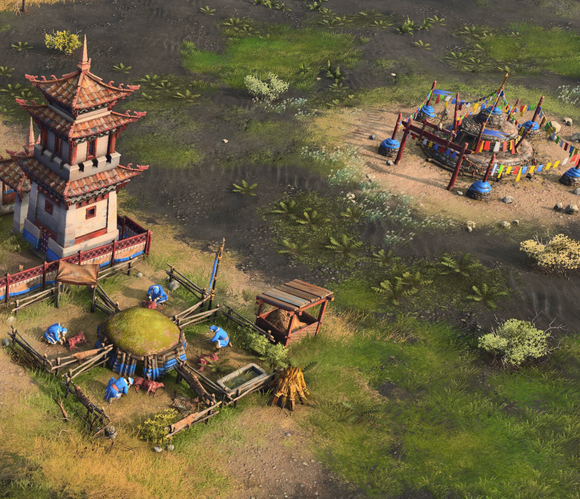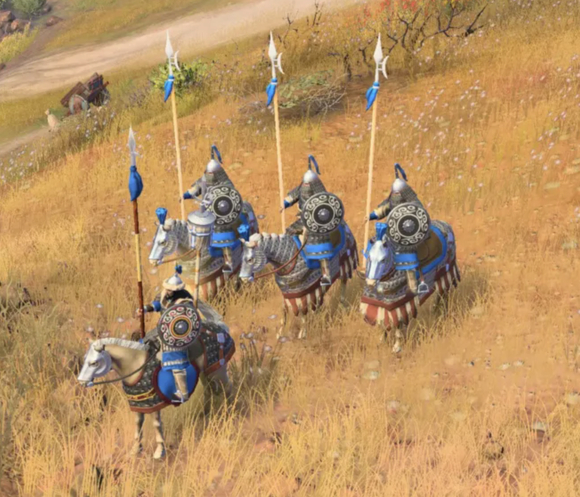I agree about architecture and religion.
In fact, that was one of my concerns, or even one of the wishes I expressed when I mentioned what the Golden Horde should be like in various threads.
I even suggested they be a “Skin” in the Turkish and Islamic version of the Mongols, but well, now that is going to be a “Canon Civ”, we have to be prepared for how they gonna represent them.
Religion
So far, based on what has been shown, we only know they have Ovvos, but they haven’t said anything about their religious building. Historically:
-
The Mongols of the Golden Horde were initially Tengrist animists, so it’s understandable why they continue to make Ovoos.
-
In 1313, Oz Beg Khan named Islam the state religion, even though many Buddhist lamas protested. The Horde’s capital, Sarai, had many mosques well decorated with Persian architecture.
If that’s the case, at least for the 3rd Age, they should be Islamic. But I repeat: the religious building hasn’t been seen yet.
If they’re going to be “Sedentary,” they could very well have a mosque in the 3rd Age. They should, like all civs, have a religious unit and a religious building.
Their parent civ, Mongols, has Buddhist elements in their religious part for Imperial age (IV), their landmark: White Stuppa, is a Tibethan buddhist monastery.
So, we could petition for the Golden Horde religious unit to be an Iman.
Arquitecture
Of course, they haven’t yet shown any “Landmarks,” unless they lack them, and the Golden Tent acts as the Abbasid House of Knowledge.
For the moment, I’m not complaining, as most of their buildings are still tents, which makes sense, since they didn’t completely abandon their nomadic life.
On the other hand, most of the Golden Horde’s cities were destroyed by Tamerlane during his invasion against Tokhtamish in 1395; therefore, many examples of their architecture no longer exist.
Some of the horde cities into which the Golden Horde was divided were later conquered and annexed by Russia, and many were modernized, so few traces of their age as part of the Mongol Horde remain.
The largest vestige of their capital, Sarai, is well chronicled in chronicles, and there is a partial reconstruction today. According to one chronicle:
-
The city of al-Sarā is one of the finest of cities, of boundless size, situated in a plain, choked with the throng of its inhabitants, and possessing good bazaars and broad streets. We rode out one day with one of its principal men, intending to make a circuit of the city and find out its extent.
-
Our lodging place was at one end of it and we set out from it in the early morning, and it was after midday when we reached the other end. We then prayed the noon prayer and ate some food, and we did not get back to our lodging until the hour of the sunset prayer. One day we went on foot across the breadth of the town, going and returning, in half a day, this too through a continuous line of houses, among which there were no ruins and no gardens.
-
The city has thirteen mosques for the holding of Friday prayers, one of them being for the Shāfiʿites; as for the other mosques, they are exceedingly numerous.
-
There are various groups of people among its inhabitants; these include the Mughals, who are the dwellers in this country and its sultans, and some of whom are Muslims, then the Āṣ (Alans), who are Muslims, the Qifjaq (Cumans), the Jarkas (Circassians), the Rūs (Rus’), and the Rūm (Romans) – [all of] these are Christians. Each group lives in a separate quarter with its own bazaars. Merchants and strangers from the two ʿIrāqs, Egypt, Syria and elsewhere, live in a quarter which is surrounded by a wall for the protection of the properties of the merchants. The sultan’s palace in it is called Alṭūn Tāsh, alṭūn meaning ‘gold’, and tāsh, ‘head’

